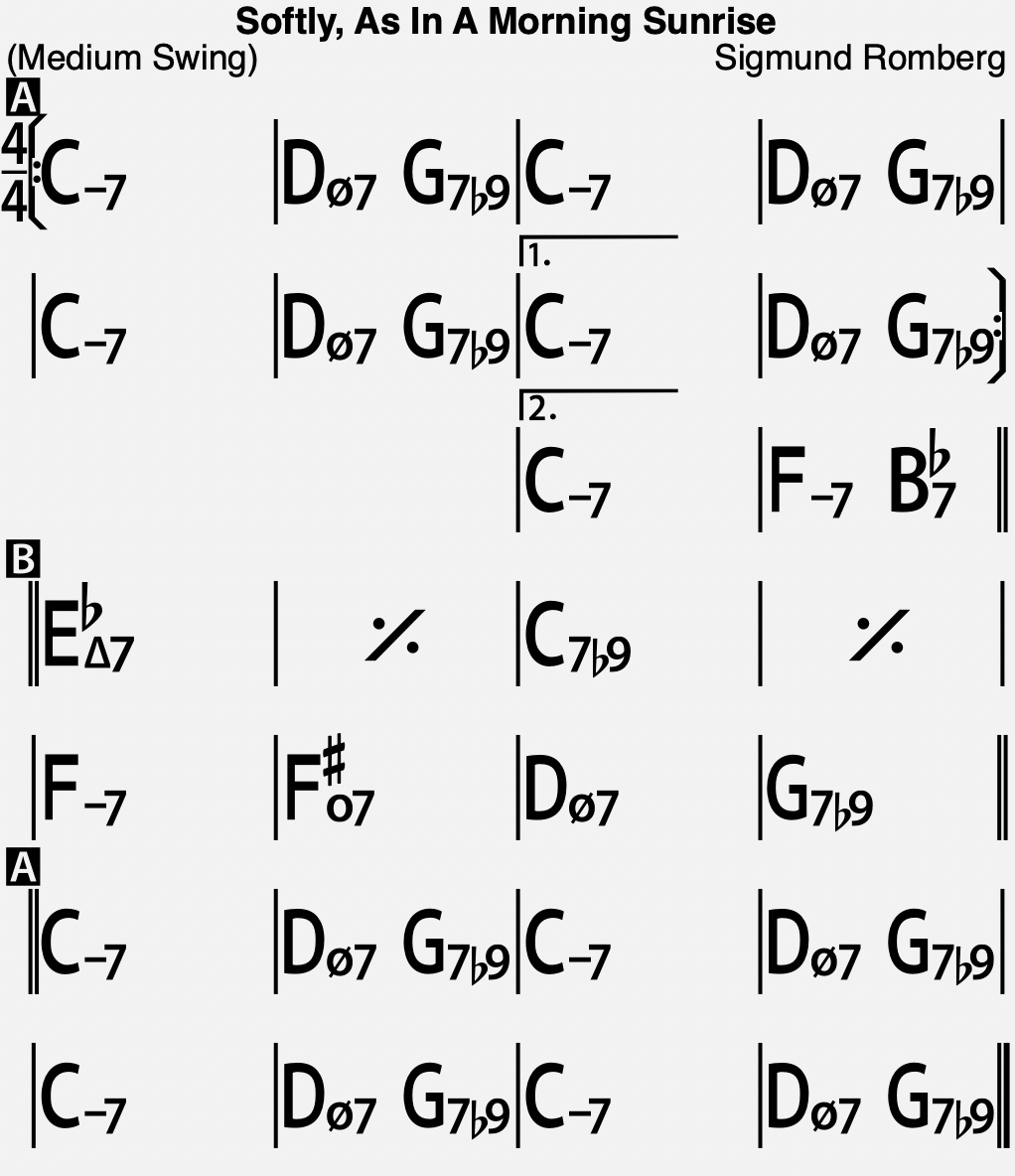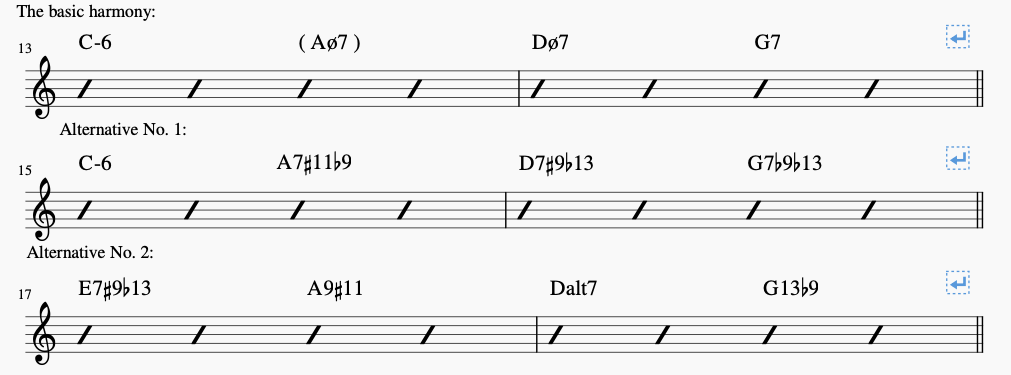Hi guys, that’s an excellent question!
(I’m going to be using only the first 2 bars of ‘Softly’, as they keep repeating throughout the A sections)
Here some thoughts:
3 important parts in Comping:
Rhythm, MELODY (highest note of the chord), and Chord Quality
1) Rhythm:
When we listen the masters, we can notice them using certain rhythmic patterns in comping, and combining them. Here 2 simple examples:
Even with these two, you can have plenty of material, for example combing them:
This way you can “collect” rhythmic material from recordings, and start using them in your own playing. Don’t be afraid to repeat the same rhythm for an A section, or even 2 A’s in a row!
2) MELODY (highest note of the chord):
This is, to me, more important than the actual voicing. I would pay more attention to a good ‘melody’ the voicings create than hip tensions.
Here 2 examples:
Again, the best way to ‘collect’ good chord melodies is to listen recordings, you don’t even need to hear the actual chord quality, just pick up the melody and figure out your own voicings under it!
3) Chord Quality:
Chord quality is the most sensitive part of comping; you want to give the soloist the basic harmonic foundation, but every now and then throw in some good tensions.
I would always go with simple first, then gradually put in some new material.
Here 2 examples:
Now let’s put all the 3 parts together,
Here examples derived from the material shown above.
First 2 different ones with the basic harmony, using the 2 example rhythms, and the 2 example melodies:
And now 2 different ones with using a mixture of the rhythm examples, 2 example melodies and the 2 example chord alterations:
This way you can find plenty of material by just using few different things.
I hope this helps, let me know if you have any questions!
All the best,
-Tuomo







